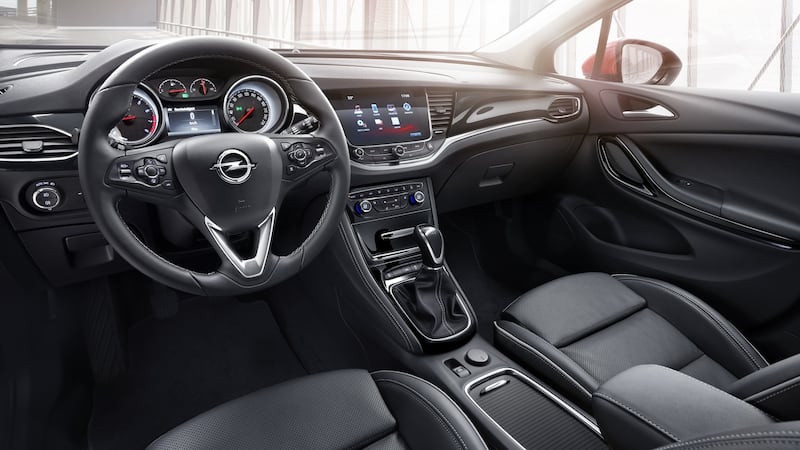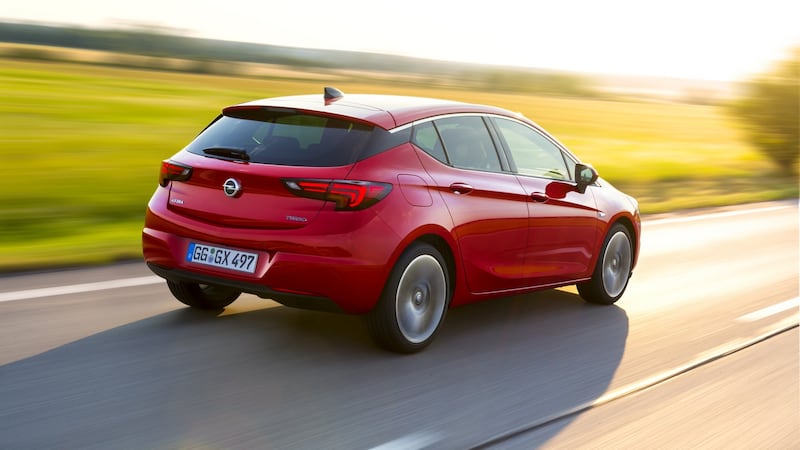Per ardua – through hardship. ad astra – to the stars. Who says Latin is a dead language? Obsolete, since the fall of the Roman Empire (unless you really need to know what it says at the bottom of your posh university degree), Latin was eerily prescient in predicting the fate of the Opel Astra.
It is certainly a car which has endured its share of hardship at the hands of the car critics. Constantly compared, often unkindly, to the Ford Focus and Volkswagen Golf (and Peugeot 308, Toyota Auris, Skoda Octavia etc etc ad nauseam. See, Latin again . . . ) the Astra has often been rated no better than good, but underwhelming.
The impression oft taken was that Opel, and its masters at General Motors in Detroit, didn't care much. The Astra always sold well, especially to the voracious fleet market, so who cared what the critics thought?


Well, it seems someone in Opel did, because this new Astra seems to represent a very significant leap forward from the old one. Not in styling terms, I’ll grant you. There’s none of the insouciant handsomeness of its bigger brother, the Insignia, here. It is a very generic shape, with some handsome touches, although I still can’t figure out what the odd “shark’s fin” kick-up in the rear pillar is all about? A final desperate flourish to stop the Astra from sinking into stylistic somnolence?
If so, it primarily just succeeds in looking a bit odd.
The news from the interior is better, far better. The old Astra was never especially bad inside, except for a slight lack of rear seat space and a sense of general dullness. This new one is properly handsome and well-crafted in the cabin.
The centrepiece, on our €26,000 SRi-spec test car, is a lovely eight-inch touchscreen for the IntelliLink infotainment system, which not only works simply and looks impressive, but is better integrated into the design of the cabin than is managed by many a premium brand.
Potential for concern
The only potential for concern for Opel is that it comes with
Apple
CarPlay, which means most iPhone owners will skip past the easy-on-the-eye Opel graphical design and layout and just go straight to their seamless phone integration.
It also came with the optional OnStar system – long available in the US – which is essentially a combination of telematic connection and on-call concierge. It is free at the moment and costs a reasonable €99 a year after your first free year and could potentially be useful.
Testing it, the best we were able to do was ask the call centre to send a planned route to our sat-nav, an operation which we could just as easily have done ourselves.
Owners, though, may be able to make more of it, especially its potential for monitoring the mechanical health of the car as well as location services and the ability to call for help in the event of a crash or an emergency.
At least you’ll have some room to stretch out to contemplate how OnStar works.
The Astra is a little smaller than previously on the outside, but the engineers have found a crucial bit of extra space in the cabin – rear-seat passengers no longer feel cramped when a lanky pilot is in the front seat, while those up front have some genuine stretching room.
More immediately, the new Astra has a terrific petrol engine. At a time when diesel power is under so much scrutiny, it is pleasant to note that here is a petrol engine which is refined, punchy and yet records some almost-as-good- as-diesel fuel economy figures.
The 105hp 1.0-litre three-cylinder engine was launched last year in the Corsa, but it is an expensive option in that car.
In the Astra, it comes with a more measured price and that inestimably increases its appeal. The official CO2 emissions figure of 105g/km means that you can tax it for a mere €190 a year, and while we certainly couldn’t match Opel’s claimed 66m/pg combined fuel economy figure, the 43m/pg we did manage to extract seems reasonable.
It is rather too easy to send that figure spiralling south by indulging the engine’s pleasingly revvy nature, but the fast-acting stop-start system helps claw a bit back.
You still won’t go far on a full tank though – remember that extra space in the cabin? Part of that has come at the expense of fuel storage – the tank is tiny.
At least though the Astra has finally found some character when it comes to the driving experience. The last Astra was always competent but frequently so dull as to induce comas.
Vigorous response
This one feels far more alive. The steering is a touch over-light (although there’s a little more resistance when you have the optional sport button pressed), but the Astra’s nose responds with vigour to the suggestion of a corner, and the whole car feels light and agile.
In some ways, perhaps slightly too much so – a Skoda Octavia, for example, is less fun but feels more secure on the motorway. Nonetheless it is hard not to love the Astra’s up-an-at-’em nature and I reckon it now has the once- class-leading Focus beaten for its dynamic responses.
Certainly the steering is sweeter on the Opel.
In fact, I think Opel may just have found itself at the top of the class.
Last year’s Focus facelift left Ford’s hatch saddled with a cabin that still feels too cheap and too small in the back. The Golf is still excellent but its image is at least temporarily tarnished, the Octavia’s bluff styling won’t appeal to all, the Auris’s cabin is still too plain and the Peugeot 308’s rear seats are too tight.
That leaves the Astra with the best cabin, a class-best-equalling chassis, a terrific little turbo engine with just the right figures and some sharp pricing. Would it be too tacky to say that a star is born?












